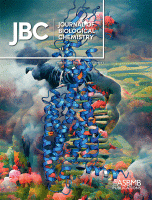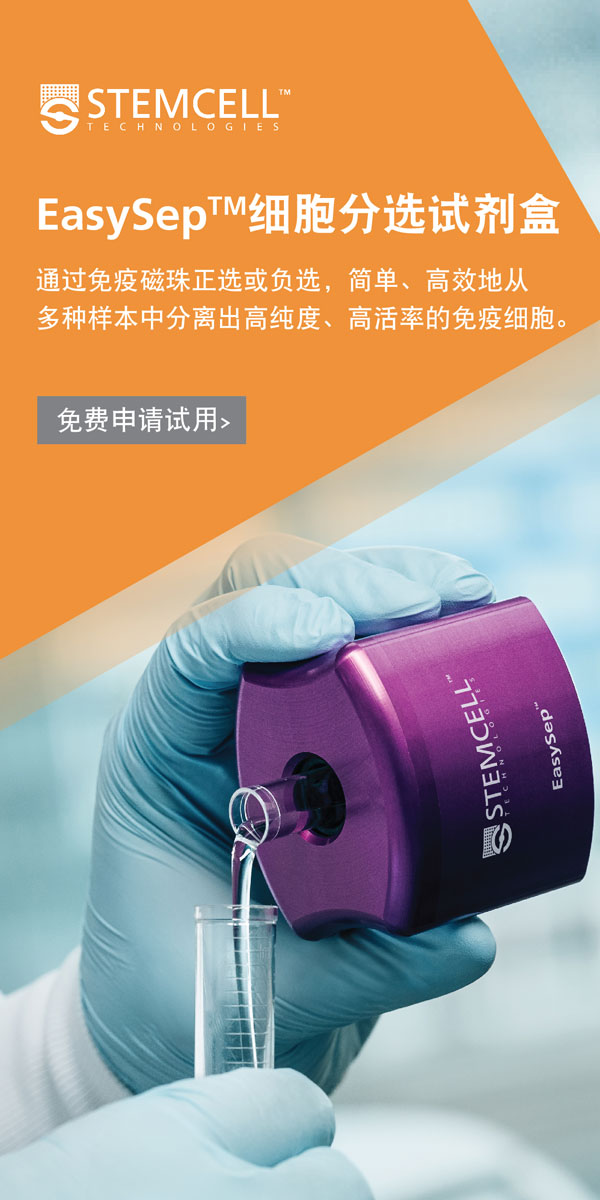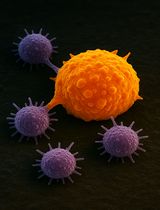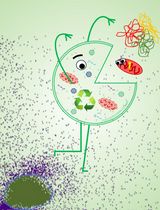- EN - English
- CN - 中文
Flow Cytometry Analysis of SIRT6 Expression in Peritoneal Macrophages
腹腔巨噬细胞中 SIRT6 表达的流式细胞术分析
发布: 2022年10月05日第12卷第19期 DOI: 10.21769/BioProtoc.4523 浏览次数: 3420
评审: Chiara AmbrogioHemant GiriAnonymous reviewer(s)

相关实验方案
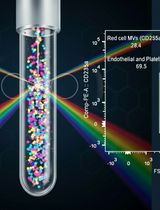
外周血中细胞外囊泡的分离与分析方法:红细胞、内皮细胞及血小板来源的细胞外囊泡
Bhawani Yasassri Alvitigala [...] Lallindra Viranjan Gooneratne
2025年11月05日 1329 阅读
Abstract
The sirtuin 6 has emerged as a regulator of acute and chronic immune responses. Recent findings show that SIRT6 is necessary for mounting an active inflammatory response in macrophages. In vitro studies revealed that SIRT6 is stabilized in the cytoplasm to promote tumor necrosis factor (TNFα) secretion. Notably, SIRT6 also promotes TNFα secretion by resident peritoneal macrophages upon lipopolysaccharide (LPS) stimulation in vivo. Although many studies have investigated SIRT6 function in the immune response through different genetic and pharmacological approaches, direct measurements of in vivo SIRT6 expression in immune cells by flow cytometry have not yet been performed. Here, we describe a step-by-step protocol for peritoneal fluid extraction, isolation, and preparation of peritoneal cavity cells, intracellular SIRT6 staining, and flow cytometry analysis to measure SIRT6 levels in mice peritoneal macrophages. By providing a robust method to quantify SIRT6 levels in different populations of macrophages, this method will contribute to deepening our understanding of the role of SIRT6 in immunity, as well as in other cellular processes regulated by SIRT6.
Graphical abstract:

Background
Sirtuins, NAD+-dependent deacetylases, have been implicated in many biological processes, including inflammation. In the context of the inflammatory response, SIRT6 in particular has attracted attention due to its apparently coexisting and opposite pro- and anti-inflammatory activities (Kawahara et al., 2009; Xiao et al., 2012; Jiang et al., 2013; 2016). Initially, and similarly to other sirtuins, SIRT6 was proposed to inhibit inflammation by silencing NFκB and c-Jun–dependent transcription. Through its deacetylating enzymatic activity on Ac-H3K9, SIRT6 indirectly regulates cytokine expression (Kawahara et al., 2009; Bauer et al., 2012; Xiao et al., 2012). Recently, it has been reported that SIRT6 exerts pro-inflammatory functions through its ability to remove fatty acid groups from proteins in the cytoplasmic compartment. In particular, SIRT6 promotes tumor necrosis factor (TNFα) secretion by the demyristoylation of pro-TNFα in fibroblasts and macrophages during lipopolysaccharide(LPS)-mediated acute inflammatory response (Jiang et al., 2013; Jiang et al., 2016; Bresque et al., 2022). In addition, SIRT6 is actively regulated during acute inflammation in vivo, and its inhibition dampens TNFα secretion, reducing LPS-induced septic shock, obesity-induced systemic inflammation, and progression of experimental autoimmune encephalomyelitis (EAE) (Sociali et al., 2017; Ferrara et al., 2020; Bresque et al., 2022).
Most studies focusing on the role of SIRT6 in inflammation have been performed in vitro and have not measured changes in its localization and expression during the inflammatory response. Recently, studies regarding conditions for SIRT6 ablation have been developed to assess SIRT6 relevance in chronic inflammation and its consequences on immune cell populations in vivo (Lee et al., 2017; Ferrara et al., 2020). The peritoneal cavity provides a large number of differentiated macrophages and is a useful tool for studying in vivo immune responses. Recently, we demonstrated, by using flow cytometry and immunofluorescence, that there was an increase in both SIRT6-positive cells and SIRT6 fluorescence intensity in CD11b+F4/80hi peritoneal macrophages stimulated by LPS. Our work is the first to apply flow cytometry to quantify SIRT6 levels in vivo in macrophages isolated from LPS-stimulated mice peritoneum (Bresque et al., 2022). Thus, this protocol sheds light on this issue, providing a new tool to study SIRT6 expression in immune and potentially other cells. This flow cytometry protocol, which employs a commercially available anti-SIRT6 antibody, offers a robust method to quantify the levels of an intracellular protein and may be applied to a wide variety of samples, including macrophages from adipose tissue.
Materials and Reagents
Male C57BL/6 mice (bred and maintained at Institut Pasteur Montevideo animal facility-UBAL)
Falcon® 50 mL conical centrifuge tubes (Corning, catalog number: 352070)
1.5 mL Eppendorf microcentrifuge tubes (CNWTC, catalog number: TYA10)
96-well plates, V-bottom (Deltalab, catalog number: 900012.1)
1 mL syringes with 26 G needle (BD, catalog number: 303176)
5 mL syringes with 24 G needle (BD, catalog number: 302187)
Ketamine (Pharmaservice, Ripoll Vet, Montevideo, Uruguay)
Xylazine (Unimedical, Montevideo, Uruguay)
95% ethanol (Drogueria Industrial Uruguaya, catalog number: 12702)
RPMI (GIBCO, catalog number: 61870-010)
FBS (GIBCO, catalog number: 10437-028)
BSA (Capricorn, catalog number: BSA-1U)
EDTA (Fluka, catalog number: 03620)
PBS (Sigma, catalog number: D1408)
0.4% trypan blue solution (GIBCO, catalog number: 15250061)
Normal rat serum (NRS) (provided by URBE - Facultad de Medicina - UdelaR)
eBioscienceTM FoxP3/Transcription Factor Staining Buffer set (Invitrogen, catalog number: 00-5523-00)
LIVE/DEAD fixable Far-Red dead cell stain kit (Thermo Fisher Scientific, catalog number: L10120)
APC anti-CD11b antibody (Millipore, catalog number: MABF520)
APCCy7 anti-CD19 antibody (BioLegend, catalog number: 115530)
APCCy7 anti-TCRβ chain antibody (BioLegend, catalog number: 109220)
APCCy7 anti-Ly-6G antibody (BioLegend, catalog number: 127624)
Brilliant VioletTM 510 anti-CD11b antibody (BioLegend, catalog number: 101245)
PE anti-F4/80 antibody (Millipore, catalog number: MABF1530)
Anti-SIRT6 antibody (Abcam, catalog number: ab191385)
Alexa FluorTM 488 goat anti-rabbit IgG antibody (Invitrogen, catalog number: A11034)
Ketamine/xylazine anesthesia (see Recipes)
70% ethanol (see Recipes)
RPMI supplemented with 0.2% FBS (see Recipes)
FACS buffer (see Recipes)
15% normal rat serum (15% NRS) (see Recipes)
Equipment
Surgical instruments (mayo and iris scissors straight and mosquito hemostatic and dissecting forceps)
Refrigerated centrifuge (Eppendorf, model: 5804R), Rotor A-2-DWP
Inverted microscope (Nikon, model: Eclipse TS100)
Hemacytometer (Bright-LineTM, catalog number: Z359629)
AttuneTM NxT flow cytometer (Invitrogen, catalog number: A24858)
Software
AttuneTM NxT Software (Invitrogen)
FlowJo (LLC, FlowJo_Vx.0.7)
Procedure
文章信息
版权信息
© 2022 The Authors; exclusive licensee Bio-protocol LLC.
如何引用
Readers should cite both the Bio-protocol article and the original research article where this protocol was used:
- Pérez-Torrado, V., Rodríguez-Duarte, J., Carlos, E. and Bresque, M. (2022). Flow Cytometry Analysis of SIRT6 Expression in Peritoneal Macrophages. Bio-protocol 12(19): e4523. DOI: 10.21769/BioProtoc.4523.
- Bresque, M., Cal, K., Perez-Torrado, V., Colman, L., Rodriguez-Duarte, J., Vilaseca, C., Santos, L., Garat, M. P., Ruiz, S., Evans, F., et al. (2022). SIRT6 stabilization and cytoplasmic localization in macrophages regulates acute and chronic inflammation in mice. J Biol Chem 298(3): 101711.
分类
免疫学 > 免疫细胞染色 > 流式细胞术
细胞生物学 > 基于细胞的分析方法 > 流式细胞术
您对这篇实验方法有问题吗?
在此处发布您的问题,我们将邀请本文作者来回答。同时,我们会将您的问题发布到Bio-protocol Exchange,以便寻求社区成员的帮助。
Share
Bluesky
X
Copy link


